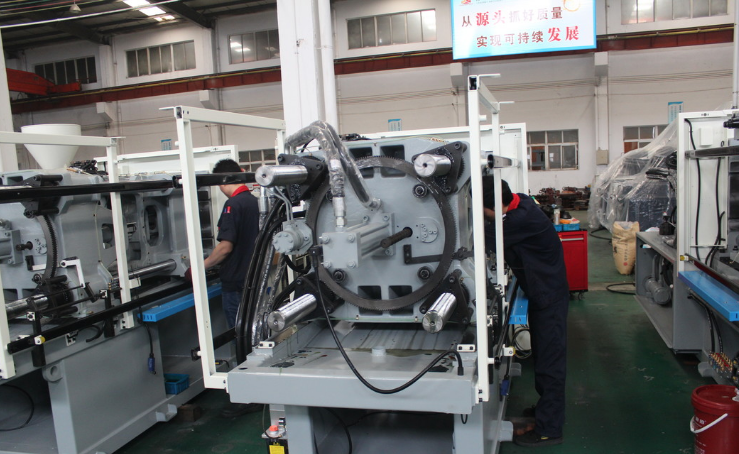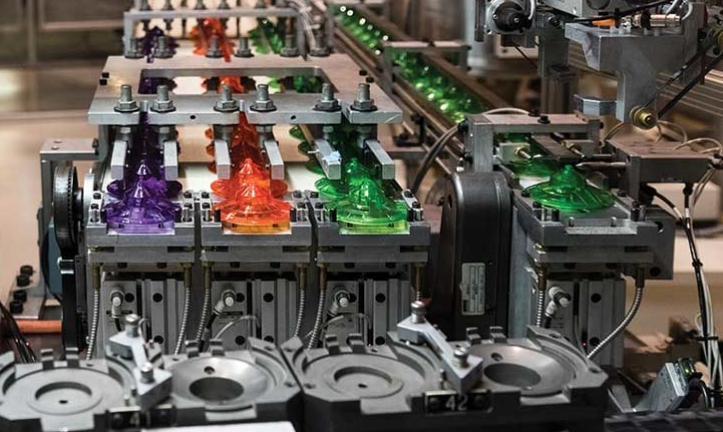Effective maintenance of injection molding machines includes regular inspections, preventive maintenance, accurate record-keeping, and the use of advanced technologies for predictive maintenance.
Routine Maintenance Procedures for Injection Molding Machines
Regular maintenance is crucial for ensuring the longevity and efficient operation of injection molding machines. Key routine procedures include conducting daily inspections and adhering to a structured lubrication and cleaning schedule.

Daily Inspection Checklists
A comprehensive daily inspection is essential for early detection of potential issues that could affect machine performance.
Visual Inspection: Check for any signs of wear, leaks, or damage. This includes inspecting hoses, connections, and seals.
Functional Test: Verify that all controls and safety features are working correctly.
Temperature and Pressure Readings: Ensure that the machine operates within the recommended temperature and pressure ranges to maintain product quality and machine longevity.
Regular daily inspections can prevent minor issues from escalating into major problems, ultimately saving on repair costs and downtime.
Lubrication and Cleaning Schedule
Proper lubrication and cleaning are vital for the smooth operation of injection molding machines.
Lubrication: Follow the manufacturer’s guidelines for lubricating moving parts. For example, toggle machines may require weekly lubrication, while others might need it less frequently.
Cleaning: Regular cleaning of the machine’s components, such as the hopper and the mold, is crucial. This prevents build-up that could affect the molding process.
Record Keeping: Maintain a log of lubrication and cleaning schedules to ensure consistent maintenance and identify potential issues early.
Adhering to a strict lubrication and cleaning schedule not only extends the machine’s lifespan but also enhances its efficiency and reliability.
For more detailed maintenance guidelines, visit the Injection Molding Machines Maintenance page on Wikipedia.
Preventive Maintenance Strategies for Injection Molding Machines
Implementing preventive maintenance strategies for injection molding machines is essential to ensure uninterrupted and efficient operation. These strategies include scheduling regular downtime for comprehensive machine inspections and timely replacement of parts subject to wear and tear.
Scheduled Downtime for Machine Inspection
Allocating specific periods for machine inspection is a proactive approach to maintenance.
Frequency of Inspection: Schedule downtime based on machine usage and manufacturer recommendations. For high-use machines, inspections might be monthly, while less frequently used machines could be inspected quarterly.
Comprehensive Checkups: Inspect all mechanical, hydraulic, and electrical systems. This includes checking for proper alignment, examining hydraulic systems for leaks, and ensuring electrical connections are secure.
Impact on Productivity: Regularly scheduled downtime minimizes unexpected breakdowns. While it requires short-term halts in production, it significantly reduces the risk of prolonged downtime due to major failures.
Scheduled inspections are vital in identifying potential issues before they escalate, thereby enhancing the machine’s operational lifespan.
Replacement of Wear and Tear Parts
Timely replacement of parts that are prone to wear and tear is crucial for maintaining machine efficiency.
Identifying Key Components: Common wear parts include seals, o-rings, hoses, and filters. Monitor these components closely for signs of wear.
Replacement Schedule: Follow the manufacturer’s guidelines for part replacement. For example, replace certain seals every six months or hoses every year, depending on usage.
Cost Considerations: Regular replacement of wear parts involves costs, but it is far more economical than dealing with the aftermath of a breakdown. Proactive part replacement can prevent costly repairs and production delays.
Timely replacement of wear and tear parts ensures consistent machine performance and reduces the likelihood of unexpected machine failures.
For more insights into maintenance best practices, the Injection Molding Machine Maintenance page on Wikipedia offers valuable information.
Diagnostic and Troubleshooting Techniques for Injection Molding Machines
Effective diagnostic and troubleshooting techniques are essential to quickly identify and address common faults in injection molding machines. This systematic approach helps in minimizing downtime and maintaining production efficiency.
Identifying Common Machine Faults
| Fault | Possible Causes | Impact | Signs to Look For |
|---|---|---|---|
| Hydraulic Leak | Worn seals or loose fittings | Reduced efficiency, increased costs | Oil on the machine, decreased pressure |
| Heater Failure | Electrical issues, wear and tear | Poor product quality, production delays | Inconsistent temperature readings, product defects |
| Clogged Nozzles | Material residue, improper temperature | Slow production, material waste | Delayed injection, irregular flow of material |
Recognizing these signs early can prevent extensive machine damage and production losses.
Steps for Basic Troubleshooting
| Problem | Basic Steps | Outcome | When to Seek Expert Help |
|---|---|---|---|
| Uneven Product Quality | Check temperature settings, inspect mold for damage | Ensures consistent product quality | Persistent quality issues despite adjustments |
| Machine Noise | Inspect for loose components, check lubrication levels | Reduces wear and extends machine life | Unidentified sources of noise or vibration |
| Slow Operation | Evaluate hydraulic system, check for software updates | Improves operational speed and efficiency | Ongoing slow operation after basic checks |
Basic troubleshooting steps are key in quickly resolving common issues and maintaining operational efficiency.
For a more detailed understanding, the Injection Molding Machine Maintenance page on Wikipedia provides further insights into maintenance and troubleshooting.
Record Keeping and Documentation in Injection Molding Machine Maintenance
Maintaining accurate records and documentation is a critical component of effective injection molding machine maintenance. Detailed logs and the strategic use of these records can significantly enhance maintenance practices, leading to improved machine performance and longevity.

Importance of Maintenance Logs
Maintenance logs serve as a vital tool in tracking the health and servicing history of injection molding machines.
Detailed Service History: Logs should include dates of service, specific maintenance activities performed, and parts replaced. This information is crucial for tracking wear and predicting future maintenance needs.
Performance Tracking: Regular entries on machine performance can help identify patterns or changes over time, indicating potential issues before they become major problems.
Legal and Compliance Records: In some industries, maintaining detailed maintenance logs is a regulatory requirement, serving as proof of compliance with safety and operational standards.
Consistent record-keeping ensures a reliable reference for machine history and maintenance activities.
Utilizing Records for Predictive Maintenance
Strategic use of maintenance records can transition a facility from reactive to predictive maintenance strategies.
Predictive Analysis: By analyzing maintenance logs, patterns can be identified, predicting when a machine might fail or require service.
Cost Savings: Predictive maintenance can significantly reduce unplanned downtime and associated costs. For example, predicting and preventing a major breakdown can save thousands in repair costs and lost production.
Efficiency Optimization: Scheduling maintenance based on predictive data rather than a fixed schedule can optimize machine uptime and operational efficiency.
Leveraging maintenance records for predictive analysis can transform maintenance practices, resulting in more efficient and cost-effective operations.
For more information on maintenance practices, visit the Injection Molding Machines Maintenance page on Wikipedia.




